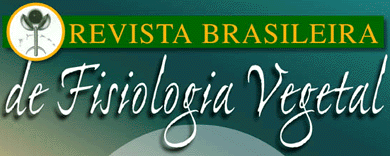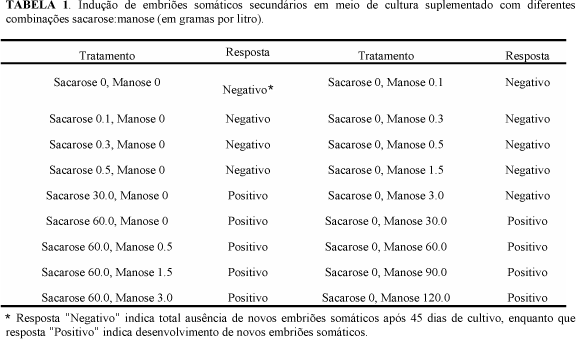Questions relative to biosafety and public perception of genetically modified organisms have taken those involved on the development of transgenic plants to a phase out on the use of antibiotic resistance marker genes. The development of transgenic papayas (Carica papaya L.) has been based so far on the use of one only marker gene, the npt II gene, which confers resistance to antibiotics such as kanamycin and neomycin. The present study aimed to evaluate the systems manA/ mannose and bar/ PPT as alternatives marker gene/ selective agent systems to be used on the development of transgenic ‘Sunrise’ papayas. Therefore, the development of secondary somatic embryos from primary ones was evaluated on embryogenesis induction medium supplemented with mannose and/or sucrose. Mannose concentration ranging from 0.1 to 120 g.L-1 were tested as sole carbon source, or in conjunction with sucrose. The development of secondary somatic embryos on medium supplement with up to 120 g/l, as sole carbon source, demonstrated that this system is not applicable for the development of transgenic papayas. When evaluating the bar/ PPT system, the development of primary and secondary somatic embryos was checked for on medium supplement with zero to 150 muM of PPT. No somatic embryos developed on medium supplemented with PPT at 125 muM or more, what suggests the use of this concentration for the in vitro selection of transgenic papaya embryos.
Phosphinothricin; PPT; mannose; PMI gene; Bar gene; genetic transformation



